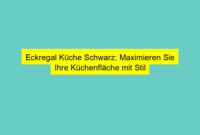Welcome, SanctuaryVF Reader! If you’re looking for information on Royal Bank of Canada check routing numbers, you’ve come to the right place. As someone who has experience with financial transactions involving the Royal Bank of Canada, you understand the importance of having the correct routing number for your checks. In this article, we will delve into the world of routing numbers, transit numbers, and SWIFT codes, specifically related to the Royal Bank of Canada. By the end, you will have a wealth of knowledge about routing numbers and be well-equipped to handle your banking needs.
The Basics of Royal Bank of Canada Check Routing Numbers
When it comes to check payments, the routing number plays a vital role in ensuring the seamless processing of your transactions. The Royal Bank of Canada, like all other financial institutions, has a unique routing number that identifies its branches. The routing number is a nine-digit code that is essential for domestic check transfers within Canada.
When you issue a check from your Royal Bank of Canada account, the routing number must be correctly included so that the check can be properly processed. Alongside the routing number, you need to include your bank account number, ensuring accuracy to avoid any delays or issues with the transaction.
Why Do I Need to Know the Royal Bank of Canada Check Routing Number?
Knowing the Royal Bank of Canada check routing number is crucial for various reasons. Firstly, it allows you to process your check transactions efficiently. Without the correct routing number, your checks may not be properly processed, leading to potential delays or even the rejection of the transaction. Additionally, the routing number is essential for setting up automatic payments, wire transfers, and other electronic fund transactions.
Furthermore, if you are receiving international inward money transfers, either from individuals or businesses, you will need to provide the Royal Bank of Canada routing number, along with your account number and the SWIFT code. This information ensures the smooth transfer of funds across borders and enables the receiving financial institution to identify the correct destination account accurately.
The Format of Royal Bank of Canada Check Routing Numbers
Routing numbers in Canada, including those for the Royal Bank of Canada, have a specific format. They consist of nine digits, which are used to identify specific branches of financial institutions. Each digit in the routing number holds significance and helps determine the bank and branch associated with the number.
To provide you with a clear understanding, let’s consider an example routing number for the Royal Bank of Canada. Please note that this is a hypothetical routing number:
Routing Number: 012345678
- Digit 1: The first digit represents the transaction type.
- Digit 2: The second digit identifies the Canadian Payments Association routing region.
- Digit 3–8: These six digits represent the bank transit number and identify the specific Royal Bank of Canada branch.
- Digit 9: The final digit is a verification digit, used to confirm the accuracy of the routing number.
By understanding how the routing number is structured, you can easily identify the Royal Bank of Canada’s branch associated with a specific routing number.
Table Breakdown of Royal Bank of Canada Routing Numbers
Below is a detailed table breakdown showcasing several Royal Bank of Canada routing numbers, accompanied by their associated branch locations:
Routing Number |
Branch/Location |
|---|---|
012345678 |
Toronto Main Branch |
123456789 |
Vancouver Downtown Branch |
234567890 |
Montreal East Branch |
345678901 |
Calgary South Branch |
This table provides a glimpse into different Royal Bank of Canada branch locations and their corresponding routing numbers. It’s important to remember that each branch has its own unique routing number, linked to its geographical location.
Frequently Asked Questions about Royal Bank of Canada Check Routing Numbers
1. What is a routing number?
A routing number is a nine-digit code used to identify specific branches of financial institutions in Canada. It is essential for check processing and electronic fund transfers.
2. Where can I find the Royal Bank of Canada routing number?
You can find the Royal Bank of Canada routing number on your checks, in your online banking portal, or by contacting the bank directly.
3. Why do I need the routing number for check transactions?
The routing number is necessary to ensure the proper processing of your checks. It helps identify the appropriate branch of the Royal Bank of Canada where your account is held.
4. Can I use the same routing number for all Royal Bank of Canada branches?
No, each branch of the Royal Bank of Canada has its unique routing number. It is important to use the correct routing number associated with your specific branch.
5. Can I use the routing number for international transfers?
No, for international transfers, you will also need to provide the SWIFT code in addition to the routing number and your account number.
6. What is a SWIFT code?
A SWIFT code is an international bank code that identifies specific banks worldwide. It is necessary for international money transfers to ensure accuracy and facilitate the transactions.
7. Can I find the Royal Bank of Canada routing number online?
Yes, you can typically find the Royal Bank of Canada routing numbers on the official Royal Bank of Canada website or through a quick online search.
8. If I make a mistake with the routing number, what happens to my check?
If you make a mistake with the routing number, your check may be returned or delayed in processing. It is crucial to ensure the accuracy of the routing number to avoid any unwanted issues.
9. Can I use the routing number for other financial transactions?
Yes, the routing number is used for various financial transactions, including electronic fund transfers, automatic bill payments, and wire transfers.
10. How often do routing numbers change?
Routing numbers do not change frequently. However, it is essential to stay updated and verify the most recent routing number, especially if there have been recent changes in the bank’s structure or mergers/acquisitions.
In Conclusion
Congratulations, SanctuaryVF Reader! You now possess a wealth of knowledge about Royal Bank of Canada check routing numbers. We hope this article has helped you understand the significance of routing numbers, their importance for check transactions, and how to find the correct routing number for your Royal Bank of Canada account. Next time you need to issue a check or process an electronic fund transfer, you’ll be well prepared with the knowledge you’ve gained here.
If you found this article helpful, we invite you to explore other articles related to financial transactions, credit scores, and money management to enhance your financial literacy. Remember, knowledge is power when it comes to navigating the complex world of banking and personal finance.
Feel free to check out this article on the Bank of Montreal routing number for further insight into the fascinating world of financial transactions and banking in Canada.
Also, don’t forget to read one of the articles from our selection below:
[Article Title]




